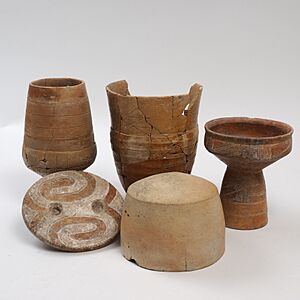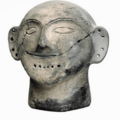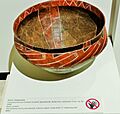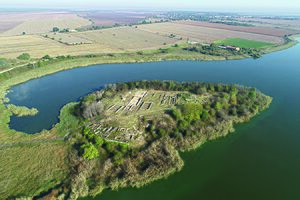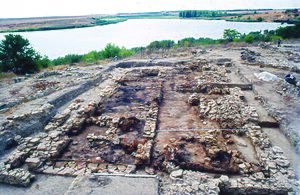Hamangia culture facts for kids
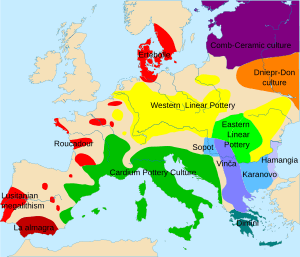 |
|
| Horizon | Old Europe |
|---|---|
| Period | Neolithic, Chalcolithic |
| Dates | circa 5250 BC — circa 4,500 BC |
| Type site | Durankulak |
| Preceded by | Karanovo culture, Starcevo culture, Dudești culture |
| Followed by | Varna culture, Boian culture, Gumelnița culture |
The Hamangia culture was an ancient group of people who lived in parts of Romania and Bulgaria a very long time ago. This was during the Late Neolithic period, also known as the New Stone Age. They lived in the area between the Danube River and the Black Sea. The culture is named after a place called Baia-Hamangia, where their remains were first found in 1952.
Contents
When Did the Hamangia Culture Live?
The Hamangia culture began around 5250 BC (about 7,270 years ago). It lasted for about 700 years, ending around 4550 BC. Over time, their way of life was taken over by another group called the Boian culture.
Some experts believe the Hamangia people might have come from a place called Anatolia (modern-day Turkey). This is because their culture shows connections to Anatolian traditions. Other groups living nearby at the time seemed to have developed from earlier people in Europe.
Amazing Hamangia Art
The Hamangia culture is famous for its incredible artwork, especially its clay figures. These pieces are still admired by many art historians today.
Pottery and Designs
The Hamangia people made beautiful pottery. They often painted their pots with detailed patterns. These designs usually featured spirals and geometric shapes. Common pottery items included bowls and tall, cylindrical cups. They decorated these with dots, straight lines, and zig-zags, making their pottery truly unique.
Special Clay Figures
The Hamangia culture also created unique clay figures. These statues were often very simple in style. They usually showed standing women without faces, but with clear body shapes. Two of the most famous figures are known as "The Thinker of Cernavodă" and "The Sitting woman". These are considered masterpieces of ancient art.
Gallery
Hamangia Settlements
The Hamangia people lived in rectangular houses. These homes usually had one or two rooms. They were built using a method called wattle and daub, which uses woven branches covered with clay. Sometimes, they even used stone for the foundations of their houses, especially at a site called Durankulak.
Their villages were often laid out in a grid pattern. Some settlements grew over time, forming small mounds called tells. These communities were typically found near the coast, by lakes, or along riverbanks.
Important Places to Discover
Several important sites help us learn about the Hamangia culture:
- The Durankulak lake settlement: This village started around 7000 BC on a small island. By 4700 BC, using stone for building was common here. This was quite unique for Europe at the time. Today, it's known as the Archaeological Complex Durankulak.
- Cernavodă: This is a burial ground where the famous "Thinker" and "Sitting Woman" statues were found.
- Baia-Hamangia: This is the site that gave the culture its name. It was discovered in 1953 near Lake Golovița, close to the Black Sea coast in Romania.
Burial Customs
The Hamangia people buried their dead in cemeteries. They would place the bodies either crouched or stretched out. In the earliest Hamangia burials, people were usually buried without pottery. Instead, they included items like flint tools, carved shells, bone tools, and shell ornaments as grave goods.
See also
- Cucuteni-Trypillia culture
- Cycladic art
- History of Bulgaria
- Old Europe
- Prehistoric art
- Prehistory of Southeastern Europe
- Prehistoric Romania
- Varna culture
- Vinča culture
- List of Stone Age art


